Pipe bursts can be prevented by addressing key factors like frozen pipes, corrosion, high water pressure, and regular maintenance. Early detection is crucial; assess damage, document observations, and equip yourself with essential tools for effective repairs. A temporary DIY fix involves shutting off water, absorbing excess water, using duct tape and plastic sheeting until professional help arrives. Long-term strategies include annual inspections, insulating pipes, replacing old materials, installing expansion joints, and regularly flushing water heaters. For complex issues, seek professional help to avoid DIY mistakes and ensure long-lasting repairs while preventing future damage. Regular maintenance and understanding cost estimates for pipe repair are essential for homeowners.
“A burst pipe can cause significant damage and disrupt your home or business operations. Understanding the causes, assessing the extent of the harm, and knowing the right tools for the job are crucial steps in effective pipe repair. This comprehensive guide covers everything from identifying common causes to long-term prevention strategies.
Learn about temporary fixes, professional services, DIY cost estimates, and maintenance tips to keep your pipes intact year-round.”
Understanding Burst Pipe Causes
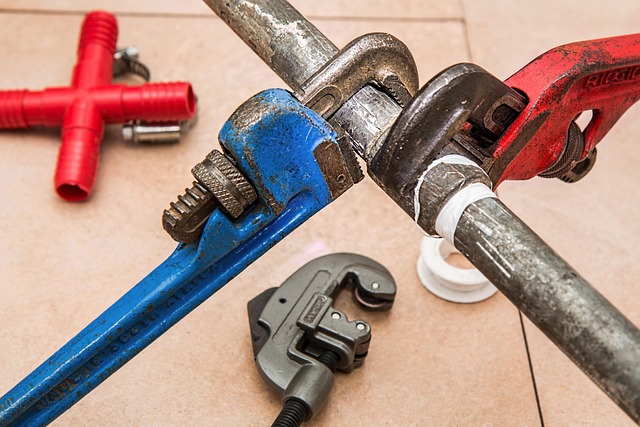
When a pipe bursts, it’s often due to a combination of factors that lead to this emergency situation. One common cause is frozen pipes, where water inside them expands as it freezes, putting immense pressure on the pipe walls. This can result in cracks or breaks, especially in areas exposed to cold temperatures. Another significant factor is pipe corrosion over time, which weakens the material, making it more susceptible to bursts.
Old or poorly maintained pipes are also at a higher risk of bursting. The aging process can lead to rust accumulation and structural deterioration, further exacerbating the issue. Additionally, high water pressure can contribute to pipe damage, putting excessive strain on fittings and joints, ultimately leading to leaks or bursts. Prompt pipe repair is essential to mitigate these causes and prevent further damage.
Assessing the Damage

When dealing with a burst pipe, assessing the damage is crucial for effective pipe repair. Start by identifying the affected area and the extent of the leak. Inspect visible signs like water damage on walls, floors, or ceilings, as well as moisture buildup around the pipes. Check if the pipes are rusted or corroded, which could indicate underlying issues. Look for any deformities or cracks in the piping to understand the severity of the problem.
Documenting these observations will help you determine the best course of action for pipe repair. Consider taking photos and noting down specific measurements. This information is valuable when planning repairs and ensuring a permanent fix. Remember, early detection and assessment can prevent further damage and costly repairs in the future.
Tools and Equipment Required for Repair
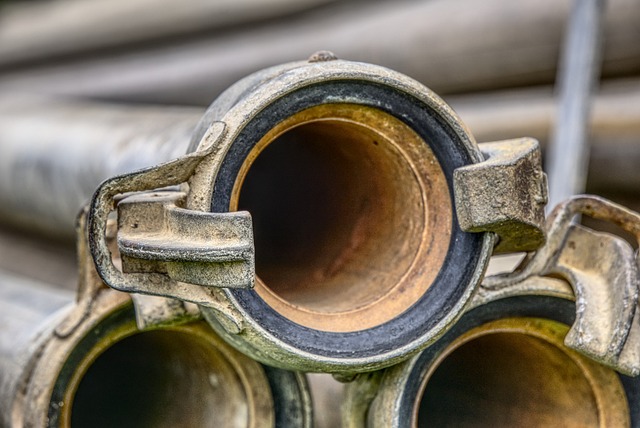
When it comes to repairing a burst pipe, having the right tools and equipment is essential for a successful and efficient fix. Here’s what you’ll need for the job:
1. Pipe repair kit: This typically includes various sizes of replacement pipe sections, couplings, clamps, and glue or tape designed specifically for pipe repairs. These kits are often readily available at hardware stores.
2. Plumber’s snake or auger: A plumber’s snake is a flexible tool that can help clear debris from the burst pipe, making it easier to access and repair the damage. An auger, which is a type of drill bit with a cable, can be used to break up blockages or remove stubborn clogs.
3. Wrenches: Both open-end and adjustable wrenches are useful for tightening and loosening fittings and connections during the repair process.
4. Pliers: Pliers come in handy for gripping and bending pipe sections as needed, ensuring a secure fit during replacement.
5. Hose or tubing: Depending on the type of pipe you’re dealing with, you may need to replace it with new hose or tubing, especially if the damage is extensive.
Step-by-Step Guide to Temporary Fix
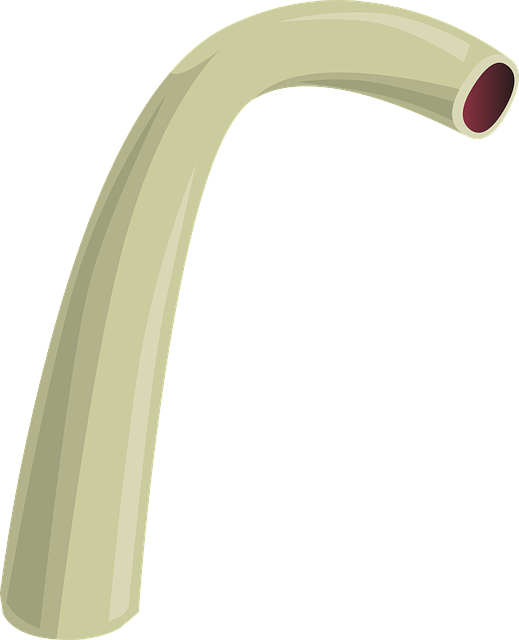
Step-by-Step Guide to Temporary Fix
If you’ve encountered a burst pipe, time is of the essence. Before professional help arrives, follow these steps for a temporary fix. Start by turning off the main water supply valve to prevent further leakage. Locate the burst area and protect yourself with gloves and eye wear. Use a cloth or towel to absorb excess water. Next, gather necessary tools: a wrench, duct tape, and a length of plastic sheeting. Remove any debris from the pipe and dry it slightly. Wrap the duct tape tightly around the burst pipe, ensuring a secure seal. Cover the taped area with plastic sheeting to contain the leak and prevent further damage. This temporary fix should buy you time until a professional can assess and permanently repair the burst pipe.
Long-Term Solutions for Prevention
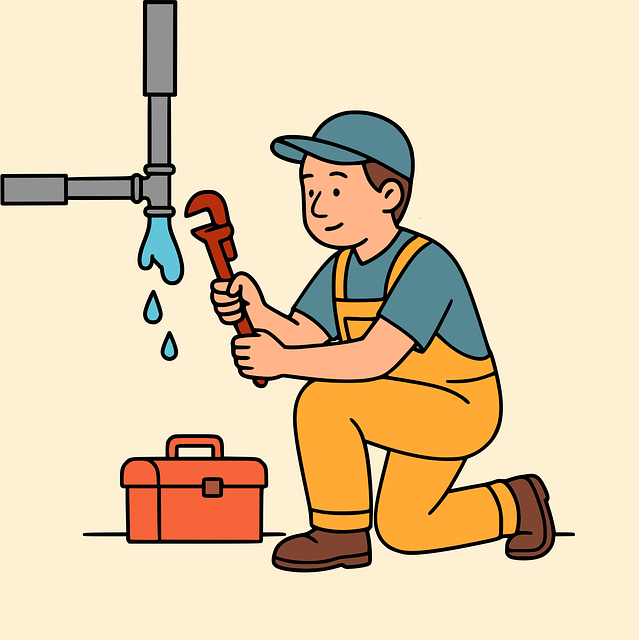
To prevent burst pipes, long-term solutions involve regular maintenance and strategic preparation. Start by inspecting your plumbing system annually for any signs of damage, corrosion, or leaks. Addressing these issues promptly can save you from costly repairs later. Insulating pipes exposed to extreme temperature changes is another effective measure; this prevents freezing during winters, which is a common cause of pipe bursts.
Consider replacing older pipes with modern, high-quality materials that are more resistant to damage. Installing pipeline expansion joints can also help absorb stress and movement, reducing the risk of burst pipes. Regular flushing of water heaters and checking for air in the system ensures optimal pressure levels, minimizing the chance of pipe failures.
When to Call a Professional Plumber
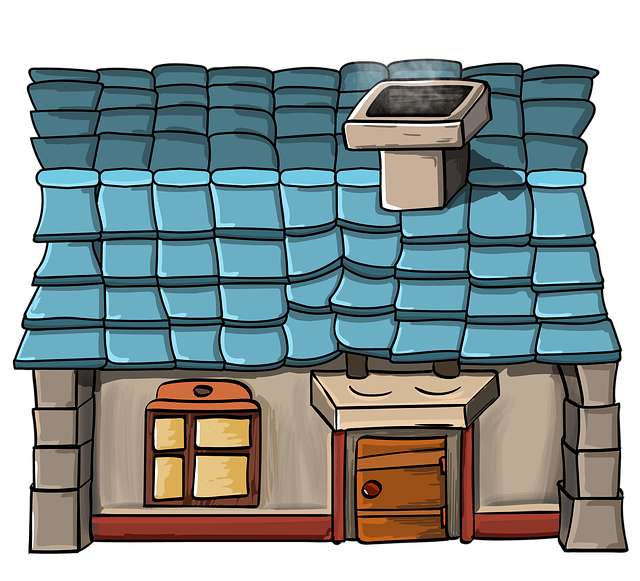
If you notice signs of a burst pipe, such as water gushing out or walls feeling unusually cold to the touch, it’s crucial to act quickly. However, before tackling the issue yourself, consider whether you should call a professional plumber. DIY methods can be suitable for small leaks or simple repairs, but more complex situations require expert knowledge and tools. Burst pipes can cause significant damage if left unattended, leading to water damage, mold growth, and even structural issues.
A professional plumber is equipped to handle the full scope of pipe repair, from identifying the source of the burst to implementing effective fixes. They possess specialized equipment and in-depth understanding of plumbing systems, ensuring a swift and efficient resolution. Calling a pro is particularly important for pipes embedded behind walls or under floors, as accessing these areas safely requires expertise. Moreover, professionals can offer long-term solutions, providing peace of mind that your plumbing system is in good hands.
Common Mistakes to Avoid During Repair

When tackling burst pipe repair, it’s crucial to be aware of common pitfalls to ensure a successful and long-lasting fix. One major mistake to avoid is attempting DIY repairs without proper knowledge or tools—pipe repairs require specialized equipment and expertise to prevent further damage or leaks. Always assess the extent of the burst and understand the specific type of pipes involved before starting any repair work.
Another frequent error is skipping important preparation steps, such as shutting off the water supply to avoid flooding and minimizing damage. Using incompatible materials or not following manufacturer guidelines for replacement parts can also compromise the integrity of the repair. Remember, proper sealing and joining techniques are essential to prevent future bursts; inadequate or incorrect methods can lead to persistent leaks.
Cost Estimates: DIY vs. Professional Services
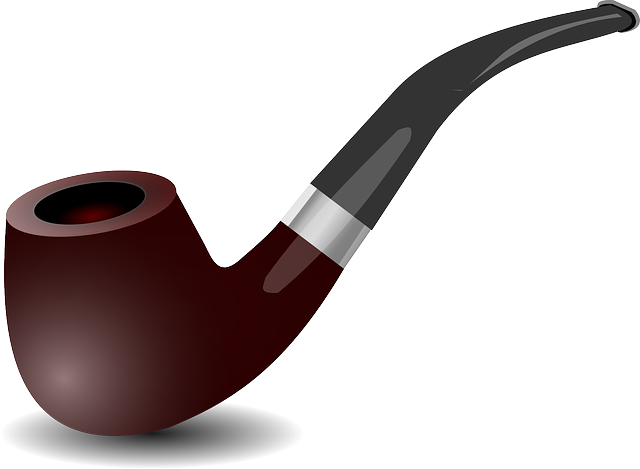
When it comes to pipe repair, understanding cost estimates is crucial for any homeowner or property manager. One of the primary considerations is whether to opt for DIY solutions or professional services. For smaller, less complex burst pipe issues, doing it yourself (DIY) can be a cost-effective option. Home improvement stores offer various tools and kits designed specifically for pipe repairs, allowing you to fix leaks or replace sections of pipe without calling in a plumber. These DIY approaches often involve purchasing materials and renting equipment, with costs varying depending on the severity of the damage and the length of pipe involved.
In contrast, professional pipe repair services provide expertise and convenience but typically come at a higher price point. Plumbers charge labor rates plus the cost of materials. While this might seem pricier upfront, professional repairs often result in less waste, faster completion times, and guaranteed work. For larger or more intricate burst pipe problems, especially in older buildings with unique plumbing setups, professional services are often the better value in the long run, ensuring the job is done right and preventing potential future damage.
Maintenance Tips to Prevent Future Burst Pipes
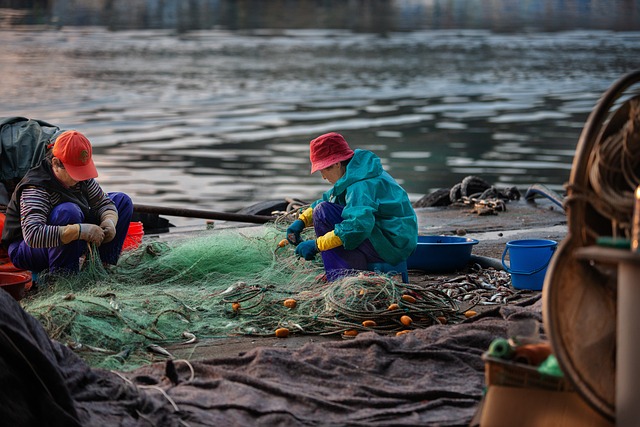
Regular maintenance is key to preventing burst pipes, an issue that can cause significant damage and disrupt your daily life. Start by inspecting your pipes for any signs of corrosion, especially in older homes or areas with low water pressure. Look for rusted joints, leaks, or unusual noises, as these could indicate weak spots.
Insulating pipes against extreme temperature changes, especially during winters, can prevent pipe bursts. Consider using heat tape or thermal insulation to protect exposed pipes. Regularly flushing your plumbing system and clearing drain traps of debris is also essential. Additionally, keeping a watchful eye on water pressure levels and addressing any sudden drops promptly can help avoid pipe damage caused by pressure surges.
